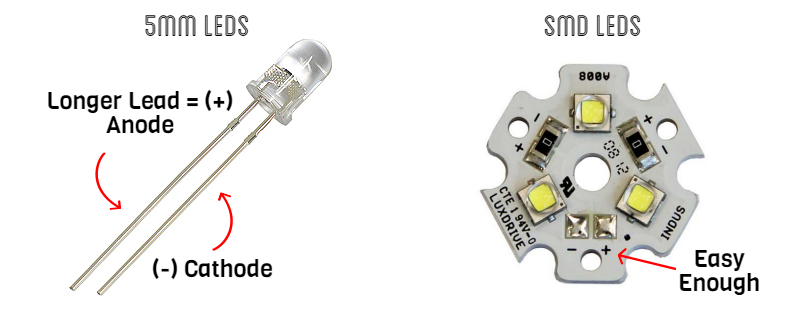


Connect the right lead of the resistor to the left lead of the LED. The movement of electrons towards the cathode (which carry a negative charge) means current departs from the cathode (positive charge). Connect the positive terminal of your battery supply to the left lead of a 1,000 ohm resistor. The exact voltage drop will of course depend upon the semiconductor material used, color, tolerance, along with other factors.Īs the LED is basically a diode, its IV characteristics curves can be plotted for each color as shown below. The LED's cathode is connected to the negative terminal of the battery. The negative lead of the LED is connected to the negative terminal. LED Voltage and Currentįor most low-power LEDs, the typical voltage drop is from 1.2V to 3.6V for currents between 10mA to 30mA. The positive lead of an LED (anode) is usually longer than the negaitve lead (cathode). If we consider electron flow, in a battery, electrons move from the anode (so it is the negative electrode), and moves to the cathode (which is the positive electrode). It just enhances the light output and indicates its color when it is not illuminated. Therefore the color of the light emitted by an LED is NOT determined by the color of the body of the LED. The actual color of an LED is determined by the wavelength of light emitted, which in turn is determined by the actual semiconductor material used to make the diode. Gallium arsenide(GaAs) Aluminium gallium arsenide (ALGaAs) Here, the cathode is negative as the electrical energy that is supplied to the cell results in the decomposition of chemical compounds. The thermal pad of the LED on the positive side must be connected to the anode, and the one on the negative side, must be connected to the cathode.


 0 kommentar(er)
0 kommentar(er)
